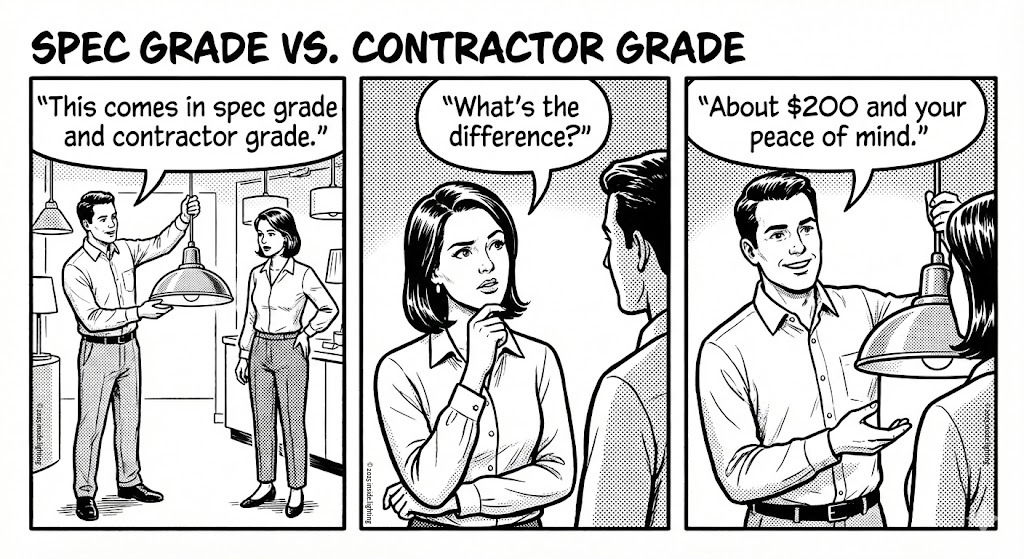February 14, 2025
Make America Incandescent Again?

Would manufacturers even revive discontinued incandescent bulbs if Trump’s rollback succeeds?
President Trump has renewed his long-standing opposition to LED lightbulbs. In a Truth Social post this week, President Trump directed Lee Zeldin to reinstate policies from his first term related to household appliances, including lightbulbs.
However, Zeldin is the administrator of the Environmental Protection Agency (EPA), not the Department of Energy (DOE), which oversees lightbulb efficiency regulations. Lightbulb efficiency standards can be changed through two primary avenues: regulatory action by the DOE and/or new legislation passed by Congress.
Under the Energy Policy and Conservation Act (EPCA), the DOE has the authority to establish and modify these standards through the rulemaking process, which includes public notice, comment periods, and potential legal challenges. While a new administration could direct the DOE to revise existing regulations, any changes would still need to follow this formal process. Legislative action, though less likely, could also override or amend current standards through new federal law.
Trump’s Call for ‘Common Sense Standards’
In his Truth Social post, President Trump stated:
President Trump incorrectly referred to Zeldin as “Secretary,” a title that does not apply to the EPA administrator. Along with lightbulbs, his post referenced regulations affecting water flow in sinks, toilets, and dishwashers—topics he frequently criticized during his first term.
Since his confirmation on February 3, new Secretary of Energy Chris Wright has remained quiet on the issue. Reversing this policy may require action from Congress, not just the DOE. While a new administration could weaken enforcement or introduce regulatory loopholes, significant changes may still face legal and legislative hurdles.
Two key legal challenges: The Energy Policy and Conservation Act (EPCA) requires that any new or updated efficiency standard be practical, cost-effective, and lead to meaningful energy savings. Additionally, EPCA includes a "no backtracking" rule, which prevents the DOE from rolling back existing efficiency standards unless a strong new justification is presented.
For now, the federal lightbulb efficiency requirement of 45 lumens per watt remains in effect, which effectively bans most traditional incandescent bulbs.
Trump’s History With Lightbulbs
President Trump has criticized modern energy-efficient lighting for years. In 2019, he made headlines for joking that LED bulbs gave him an unflattering appearance.
“Of course, being a vain person, that’s very important to me. Gives you an orange look. I don’t want an orange look,” President Trump said.
He has also argued that LED bulbs are too expensive, despite their lower lifetime operating costs. While LED bulbs have a higher upfront price, their energy efficiency results in significantly lower electricity costs over time. For example, a 60-watt incandescent bulb costs $9.50 more per year to operate than a similarly bright 9-watt LED when used for three hours daily at $0.17 per kilowatt-hour.
Incandescents: Would They Even Make a Comeback?
Given current energy codes, commercial buildings are unlikely to revert to incandescent lighting. So, the residential market is the only viable space where traditional bulbs could even regain traction, but that still faces significant obstacles.
Well before the federal 45 lumens per watt standard took effect, major lighting manufacturers had been dismantling production lines for standard incandescent bulbs, scrapping the specialized glass and tungsten filament equipment needed for large-scale manufacturing. Restarting production would require significant investment, making a full comeback improbable.
However, certain specialty incandescent bulbs remain legal in the U.S. and continue to be imported and sold. Signify's Philips brand, for example, still manufactures certain specialty incandescent bulbs for specific applications. The company's website also lists standard 60-watt A19 incandescent bulbs for certain global markets, with a 2024-updated spec sheet seemingly showing ongoing availability outside the U.S.
With nearly all domestic lightbulb manufacturing shuttered, any resurgence of standard incandescent bulbs would likely rely on imports — likely from China, a key source of manufactured lightbulbs. Given President Trump’s well-documented opposition to Chinese imports, this factor alone could further complicate any large-scale comeback of traditional incandescent lighting.
What’s Next?
President Trump’s announcement indicates a strong desire for policy shift but does not immediately impact regulations. Industry stakeholders will be watching newly appointed Secretary of Energy Chris Wright and what actions he may take in response to President Trump’s repeated calls for rolling back efficiency regulations. As of now, the agency has not yet signaled any intent to reverse existing efficiency rules.
With LED technology dominating the market and efficiency laws still in place, a return to traditional incandescent bulbs remains largely symbolic rather than a practical policy change.










